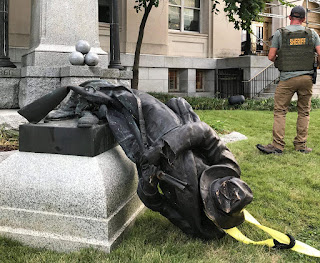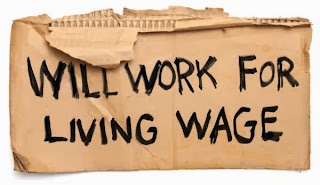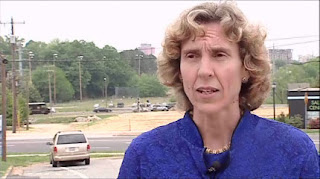


Student Loans: The Next Bailout?
Here’s what we do know about student loan debt: it’s roughly $1 trillion in size, greater than either auto or credit-card debt and second only to mortgage debt in the U.S.
Borrowers in their 30s today owe $28,500, on average. The debt burden has soared just as — and partly because — the recession hit, so younger graduates carrying the highest balances are hit with the double whammy of a weak job market (that still isn’t showing any sign of rapid improvement).
And this all comes as globalization and technological change have upended once-reliable career paths, wiped out many mid-level professional jobs and leave low-paying fields in health, food and beverage services, and retail as among the fastest growing job markets over the next decade.
Oh, and consider that student loan debt remains one of the most difficult types to forgive or discharge in bankruptcy, in part because the federal government (i.e. taxpayers) made or guaranteed 80 percent of all outstanding student loan debt as of last year. And finally, that once loans in deferral or forbearance are excluded, the delinquency rate on student loan debt was an estimated 27 percent as of the third quarter of 2011, according to a study by the New York Fed.
Worried? Americans should be.
Still, acknowledging the problem is perhaps the easiest step. Much more difficult is the question of what to do about it. Not surprisingly, young, heavily indebted grads are calling for forgiveness in full or in part of their student loan burdens. Petitions on advocacy website Change.org include calls for federal student loan interest rates to be capped at 3 percent or eliminated altogether. (Indeed, President Obama is currently among those urging Congress not to allow the interest rate on federally subsidized Stafford loans, which are aimed at low — and middle-class borrowers, to double to 6.8 percent on July 1, matching the rate for unsubsidized loans.)
And yet the trouble with those initiatives, or with forgiving student loan debt in whole or part, is threefold. For starters, the straight mathematics: the losses from any such debt reduction scheme will have to be borne by someone, most likely taxpayers, at a time when government finances are already stretched.
Second is the issue of “moral hazard,” that is, rewarding and implicitly encouraging imprudent behavior rather than punishing it. (Of course, it is easier for the public at large to demand that over-leveraged banks be punished for imprudence than 24-year-olds trying to further their education.)
And third is the question of how to keep future graduates from accumulating a mountain of student loan debt just as large, if not larger, than the one just leveled.
It is this third issue which perhaps is most pressing — and most vexing —and which also offers the most opportunity for innovation. Levying an “education tax,” making college free and assigning students to institutions based on a lottery system? Abolishing “college” altogether for more specialized trade institutions instead, while at the same time requiring a “gap year” of liberal arts prior to entry? Offering high-school grads the choice between student loans or business loans to fund new ventures? These all seem ridiculous, but then so too is our current state of affairs.
Our current system, in fact, has so failed that it may now be exacerbating income inequality (by saddling low-income students with high loan balances and shaky job prospects), economic malaise (by keeping would-be homebuyers stuck in costly rentals because of already high debt loans and/or poor credit histories, thereby damaging both the housing market and potential consumer spending), and long-term economic vitality (by hampering household and family unit formations with a higher share of 20- and 30-somethings currently stuck at home with mom and dad).
This, in fact, is why it may be far less costly for taxpayers in the long run to forgive as much of the current student-loan burden as possible. Before doing anything like that, however, there must be systematic reform to ensure debt loads simply won’t start to pile up again. (Not to mention the need for repercussions for those borrowers who most benefit from any such initiative, for the sake of fairness.) That is why the need for innovation or overhaul is so pressing.
One thing is certain: if we do nothing to alter the status quo, we will have no one to blame but ourselves for the bleak outcome.
I'll continue to ask Pres. Obama & Congress, where is the Bail Out for Students Loan Debt? Wall Street was Bailed Out. Why NOT College Students?
How Student Debt Impacts Students of Color
On July 1 the interest rate on federally subsidized Stafford Loans will double from 3.4 percent to 6.8 percent if Congress doesn’t act. Though this rate hike will have devastating consequences on more than 7 million students nationwide who currently hold a Stafford Loan, change will hit students of color especially hard.
The facts below show how students of color depend on financial aid to finance their college education and how they are uniquely impacted by student debt.
1.) Students are having trouble paying back their college loans. Studies show that only 37 percent of students are able to repay their loans on time. Students of color are more likely to depend on financial aid to attend college and have higher trends of student debt.
2.) For the first time, student loan debt has surpassed credit card debt in the United States. Student college loan debt is now higher than all credit card debt in the country put together. Nationwide, student debt is at $867 billion compared to credit card debt at $704 billion.
3.) People of color, particularly African Americans, are graduating with more student debt. African American students in particular are graduating with much more debt than white students. A 2010 study by the College Board Advocacy & Policy Center found that student loan debt levels of $30,500 or higher were more common among 27 percent of black bachelor's degree recipients compared to 16 percent of their white counterparts.
4.) Youth unemployment (ages 16 to 24) is higher for people of color, making student debt a significant financial burden. Youth unemployment is highest among youth of color, with rates for African American youth at 30 percent and Latino youth at 20 percent, compared to the white youth unemployment rate of 16 percent.
5.) Students of color rely on other forms of financial aid, such as Pell Grants, which are also facing significant cuts. Students who will lose eligibility or be cut from the Pell Grant program—a means of access to higher education and social opportunity for low-income families—will likely turn to loans to make up the difference. At a majority of historically black colleges and universities in particular, two-thirds or more of all enrolled students receive Pell Grants, with more than 90 percent of students receiving these grants at eight such institutions of higher learning.
6.) While educational attainment increases among Latinos, the achievement gap continues. From 2001 to 2011 the number of Latinos with a bachelor’s degree or higher education increased 80 percent from 2.1 million to 3.8 million. But there’s still an achievement gap: By 2012 only 14 percent of all U.S. Latinos over the age of 25 had bachelor’s degrees, compared to 34 percent of whites. A 2009 Pew Hispanic Center survey found the most common reason for the gap was pressure to support their families financially, forcing them to choose between college and their families. This means that low-interest-rate loans are that much more important to Latino youth in completing their college careers.
7.) More students of color are taking out private loans, exposing them to more financial risk. There was an approximate 16 percent increase and 12 percent increase among black and Hispanic students, respectively, that took out private loans, from the 2003–04 to 2007–08 school years. While federal loans have lower interest rates than private loans, doubling the rate will bring the two closer together, making students of color more vulnerable to defaulting on their loans.
8.) Students of color are more likely to enroll in for-profit schools, which currently account for nearly half of student loan defaults. For-profit colleges and universities tend to have higher tuition, increased dropout rates, and insurmountable debt for students. This puts economic and academic barriers on students of color, making it more difficult for them to graduate.
9.) Students of color with higher student debt are left with fewer options. Deferments and forbearances often provide short-term debt relief, but the interest on the loans may accrue and capitalize during the forbearance or deferment period, making the loans more expensive in the long term.
10.) Student debt hinders students of color from homeownership. Past-due payments hinder borrowers due to lower credit scores and having their wages used for loan repayment. According to the Federal Reserve, fewer young people are getting mortgages—just 9 percent of 29-to-34-year-olds got a first-time mortgage from 2009 to 2011, compared to 17 percent in 2001.
Allowing Stafford Loan interest rates to double would make the cost of college skyrocket—the cost of college for those relying on Stafford Loans would increase by 20 percent. Given that students of color are more likely to rely on financial aid to finance their college education and graduate with higher student debt, increasing these interest rates would disproportionately impact them. We need to focus on making college more affordable, particularly at a time when students need a good education to be competitive in the international economy.
View Larger Map
Sources: American Progress, NBC News, NY Times, Youtube, Google Maps







































































.jpg)























No comments:
Post a Comment